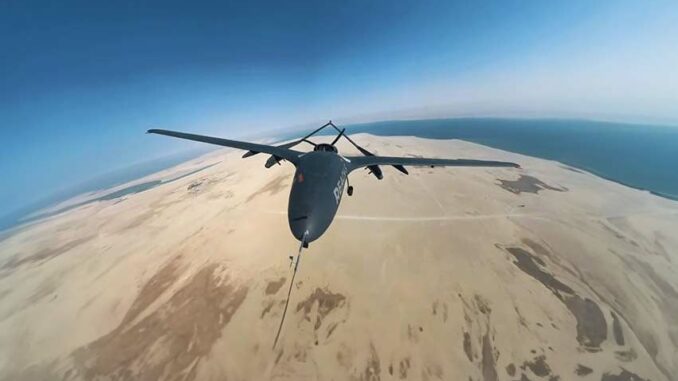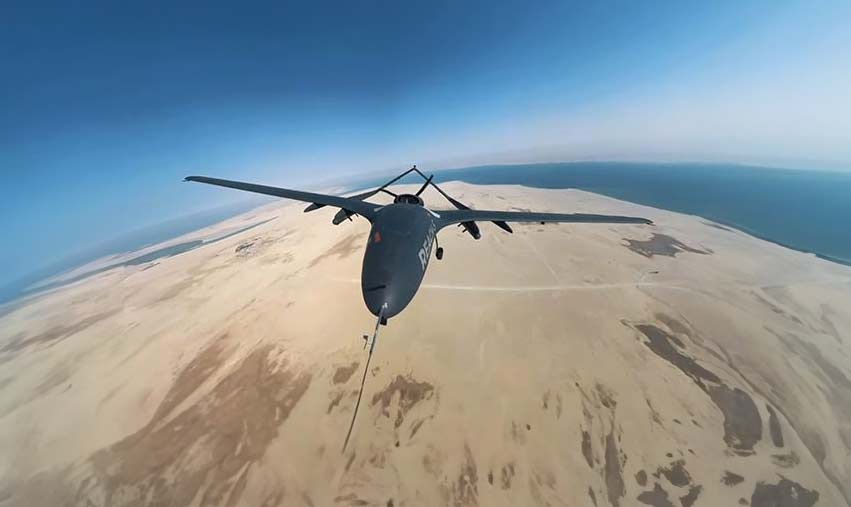
Detailed analysis of the UAE’s impressive expansion of its unmanned air arsenal, highlighting the strategic and technological implications.
The United Arab Emirates (UAE) is significantly expanding its unmanned air fleet (UAS), revealing a major strategic shift in modern warfare. With the acquisition of armed UAVs and the development of new technologies, the UAE is positioning itself as a key player in the military air domain.
The rapid and impressive rise of the United Arab Emirates’ (UAE) Unmanned Aerial Systems (UAS) force marks a significant milestone in the evolution of modern warfare. This rise in power, characterized by the development and acquisition of advanced technologies, reflects a changing military strategy, influencing the regional and global balance of power.
The development of Reach-S and the expansion of the Air Arsenal
The development of the Reach-S by Emirati defense firm Edge Group is emblematic of this transformation. In just 36 months, this double-drift drone has gone from concept to realization, capable of dropping munitions. Production, scheduled for 2024, is already supported by an impressive order for 100 aircraft from the UAE armed forces, demonstrating remarkable confidence in this national platform.
International comparison and diverse strategies
By comparison, Europe’s approach to UAS operations seems more conservative, often limited to intelligence, surveillance and reconnaissance missions. This prudence contrasts sharply with the UAE’s ambition, which is adding these UAVs to an already substantial fleet that includes Chinese, Turkish and American platforms.
International orders and future ambitions
The UAE has ordered 120 Baykar TB2 and Akinci UAVs, in addition to continuing to use exportable versions of the Predator RQ-1 from General Atomics-Aeronautical Systems (GA-ASI) and numerous Chinese UAVs. These acquisitions reflect an aggressive strategy of UAS capability expansion, potentially including the purchase of 18 MQ-9B Sea/SkyGuardians from GA-ASI.

Integration of local ammunition and strategic implications
The integration of locally-developed munitions on these platforms is another key aspect, reinforcing the UAE’s technological autonomy. This may also have strategic implications, particularly in response to Iranian investment in UAS and attack drones.
Regional and global implications
The build-up of a massive UAV fleet by the UAE, as well as neighboring Saudi Arabia, is changing the regional security landscape. These fleets offer significant combat mass and reduce personnel dependency, a historic challenge for the smaller Gulf states.
Future projects and evolving capabilities
The UAE’s future projects, including the development of the Reach-M with increased payload capacity and the development of the Sinyar jet drone, underline its determination to remain at the forefront of military air technology.
The rise of the UAE’s UAS force is a major strategic revelation. By investing heavily in these technologies and developing autonomous capabilities, the UAE is not just following the global trend, but seeking to define it. This development will have repercussions not only on the balance of forces in the region, but also on the future design of air warfare.
War Wings Daily is an independant magazine.